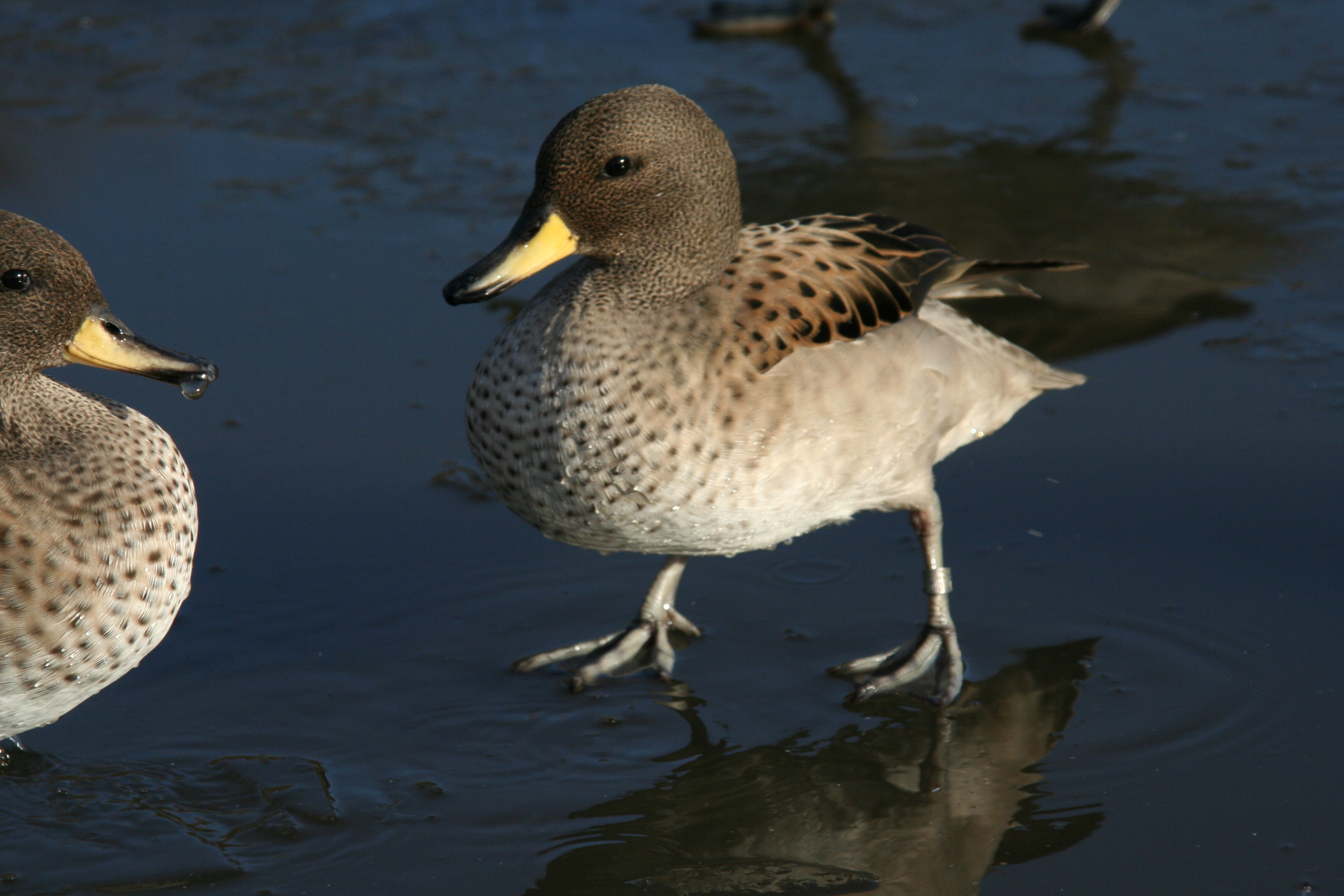
Yellow-billed teal(Anas flavirostris)
Phylum —chordata
Class — aves
Order — anseriformes
Family — anatidae
Genus –anas
There are four recognized subspecies, all found in portions of South America:
- Andean speckled teals (Anas flavirostris andium) breed in the eastern Andes Mountains, from central Colombia south to northern Ecuador.
- Merida speckled teals (Anas flavirostris altipetens) breed in the eastern Andes Mountains south to Bogota in eastern Colombia.
- Chilean speckled teals (Anas flavirostris flavirostris) breed from central Chile and northern Argentina south to Tierra del Fuego. This subspecies also inhabits the Falkland Islands and the Islands of South Georgia.
- Sharp-winged speckled teals (Anas flavirostris oxyptera) breed in the Andes from central Peru and western Bolivia south to northern Chile and Argentina.
Appearance
The namesake bill is bright yellow with a black tip and a black band along the ridge of the culmen. The species is somewhat similar to the larger yellow-billed pintail, but has a darker head, shorter neck and plain grayish sides.
Females are smaller than males, with an average weight of 390 g; males average 430 g. It measures 37 to 43 cm in length and features a wingspan of 63 to 69 cm.
Habitat
It occurs in Argentina, the Falkland Islands, Chile, Peru, Bolivia, Uruguay, and Brazil.
Behavior
The behaviors of yellow-billed teals are similar to that of other teal species. Preening behind the wing occurs in both male and female birds. They can be found in flocks ranging from 10 to 20 birds, and in some cases population sizes may exceed 200 individuals.
Some populations are migratory, whereas others remain in the same general area. Southern populations often migrate north to spend the winter months, and mountainous populations migrate to lower elevations at this time.
In captivity, these birds show little fear of humans and tend to do very well.
Diet
Food habits for yellow-billedteals are similar to those of other teals. All teal species are omnivores. Yellow-billed tealstypically consume a variety of small, freshwater invertebrates, such as amphipods (Order Amphipoda) and mollusks (Phylum Mollusca). During colder seasons, yellow-billed teal develops a wider, more opportunistic diet, sometimes feeding on rotting kelp, as well as seeds along the shoreline. Anything small and somewhat nutritional may be included in the diet of yellow-billed teal.
Reproduction
Anas flavirostris is a monogamous species. Males and females reach sexual maturity at approximately one year of age. Yellow-billed teal nests from October to November, usually on the ground near both vegetation and water. They only have one brood of ducklings per year, typically consisting of 5 to 8 eggs. Yellow-billed teal is unique in the genus Anas, in that it tends to nest in elevated tree cavities or other arboreal sites. Females make a half moon shape nest that they completely cover with their bodies. After laying her clutch, she then incubates her eggs for 24 days. After the eggs have hatched, females take the ducklings to water within 24 hours, where they begin to feed on their own. Most often the male joins the female and assists her in brood care. Near the time of fledging, at about 42 to 49 days, ducklings begin to stray away from their mother.
In captivity
Lifespan in captivity is up to 30 years.
In summer, yellow-billed tealsare kept in outdoor enclosures. The minimum size of the enclosure is 3 square meters.
In winter, they should be transferred to an insulated enclosure with a temperature of at least +5 °C. However, yellow-billed teals can easily live at cold temperatures (up to -7 °C), and in areas where winter temperatures do not fall below -8 °C, they can be kept outdoors all year round. It is desirable to equip the enclosure with additives in the form of branches and perches. In the winter room, you must install a pool with running or frequently replaced water. In areas with mild winters, teals can be kept in outdoor enclosures.
In this case, all winter it is necessary to maintain a sufficient mirror of the reservoir for birds, not covered with ice. This is achieved in various ways, one of which may be the use of an air compressor. Long hoses from the compressor that pumps air are lowered to the bottom of the reservoir, and air bubbles, rising up, carry warmer water. With constant mixing of warm water from the lower layers of the reservoir with colder water from the surface, the possibility of ice formation is eliminated even in the most severe frosts.
As a winter bedding for waterfowl, you can use soft hay, which is laid out in places where birds rest.
The diet includes grain feed-corn, wheat, barley, millet, oatmeal, wheat bran, grass, meat and fish meal, chalk, small shell, gammarus. In the warm season, it is good to give various greens - cut dandelion leaves, lettuce, plantain, duckweed. Good food for ducks - wet mixture of grated carrots, bran, various cereals. During the reproductive period and during molting, they are mixed with wet food or given separately: fish and minced meat. During working out a diet it should be calculated that the amount of raw protein does not exceed 30%.
Teals are friendly to other birds, so they can be kept on the same pond with other ducks.
Artificial shelters for nests are installed in the paddock. Ducks independently incubate, breed and raise ducklings.
 Russian
Russian
 English
English
























